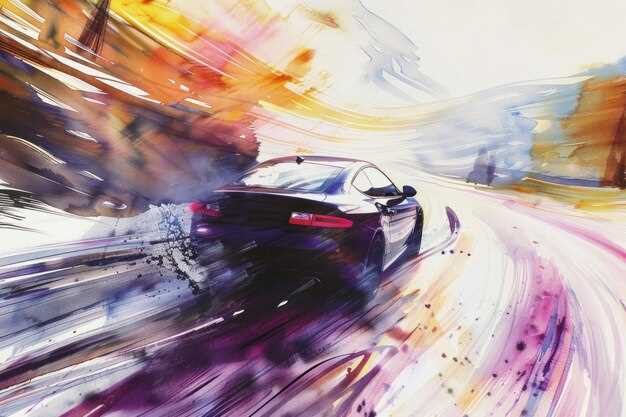
The history of motorsport is a captivating journey that spans over a century, showcasing the relentless pursuit of speed and innovation. From its humble beginnings on dirt tracks to the high-tech digital arenas of today, racing has continually evolved, reflecting technological advancements and changes in cultural attitudes towards the sport. What started as informal competitions among early automotive enthusiasts has transformed into a multi-billion dollar industry, engaging millions of fans worldwide.
As we delve into this remarkable evolution, it is essential to recognize the foundational role of dirt tracks, where the spirit of competition first ignited. These venues provided a breeding ground for the development of automotive performance and racing techniques. Over time, the introduction of specialized circuits and professional leagues paved the way for more structured and sophisticated racing formats, allowing skilled drivers to showcase their talents on a grand scale.
However, the journey does not end there. The advent of digital technology has revolutionized how we perceive and engage with racing. Virtual platforms and esports have opened new avenues for competition, enabling a diverse range of participants to experience the thrills of racing without the physical constraints of traditional motorsport. This transition to the digital realm marks a significant chapter in the history of racing, blending the excitement of athletic prowess with the limitless possibilities of technology.
How Early Racing Cultures Influenced Modern Motorsport Practices
The history of racing can be traced back to ancient civilizations, where competitions were held using horses or chariots. These early racing cultures established foundational practices that have evolved into the modern motorsport world. Community gatherings around racing events fostered a sense of camaraderie and rivalry, elements that remain integral to today’s motorsport culture.
Many traditional racing formats, such as drag racing and circuit racing, have roots in these ancient competitions. The transition from animal-powered chariots to motorized vehicles marked a significant shift, yet the principles of speed, strategy, and spectacle endured. Drivers began to focus not only on sheer speed but also on technical proficiency, leading to the innovation of vehicle designs and performance enhancements that we see in contemporary racing.
Local racing events were often held on dirt tracks, with makeshift regulations and a focus on community involvement. This grassroots approach to racing is mirrored in modern practices, where grassroots series continue to thrive and develop future talent. Cars were not just machines but extensions of the driver’s identity, echoing a sentiment that persists in today’s motorsport culture.
The influence of early racing cultures extends beyond the mechanics and logistics of motorsport; it has shaped the very ethos of racing. The commitment to competition, the thrill of speed, and the pursuit of excellence foster a community that celebrates both individual and collective achievements. Modern motorsport practices, including teamwork, sponsorship, and media engagement, find their roots within the communal aspects established by early racing enthusiasts.
In conclusion, the history of early racing cultures has deeply impacted the development of modern motorsport practices. By preserving the spirit of competition and community, these traditions continue to resonate in today’s high-speed, technologically advanced racing environment.
The Role of Technological Advancements in Shaping Racing Formats

Technological advancements have played a pivotal role in the evolution of racing formats over the years. From the early days of motorsport, where mechanical ingenuity was paramount, to the sophisticated digital platforms used today, technology has continually influenced how racing is conducted and experienced.
Initially, racing was a test of raw mechanical capabilities and driver skill. The introduction of improved engines, lightweight materials, and enhanced suspensions provided a foundation for competitive racing. As innovations such as aerodynamics and telemetry emerged, they revolutionized vehicle designs and performance strategies, allowing teams to optimize their setups for various track conditions.
In recent years, the integration of digital technology has transformed racing into a multifaceted sport. Virtual reality and simulation have allowed teams to train drivers under controlled conditions, honing their skills without the risks associated with real-world racing. These developments have not only improved driver performance but have also changed how fans engage with the sport through eSports and digital competitions.
The accessibility of data analytics has further altered racing formats by enabling teams to make informed decisions regarding race strategies and vehicle configurations in real time. The ability to collect and analyze vast amounts of data has led to a deeper understanding of racing dynamics, fostering more competitive environments both on and off the track.
Moreover, safety enhancements stemming from technological innovations have been crucial in shaping modern racing formats. Improved materials, advanced crash testing, and real-time tracking systems have significantly reduced the risks involved for drivers and spectators alike, fostering a safer racing culture.
As the evolution of racing continues, the role of technology will undoubtedly expand, influencing not just how races are run, but also how they are perceived by audiences worldwide. The shift from traditional dirt tracks to sophisticated digital platforms represents just the beginning of an exciting era in motorsport, driven by relentless innovation and the quest for efficiency and speed.
Comparing the Experience: Real-World Racing vs. Virtual Competitions

The history of racing reveals a fascinating evolution from dirt tracks to sophisticated circuits and now to the digital realm. Each form of racing, whether real or virtual, offers distinct experiences that cater to different audiences and preferences.
Real-world racing embodies the thrill and danger of speeds that can only be felt on a physical track. Drivers face extreme conditions, requiring not only technical skill but also physical endurance and mental resilience. The ambiance of a live race is unparalleled, with roaring engines, cheering crowds, and the visceral excitement of competition. Fans often form a deep emotional connection to teams and drivers, creating a vibrant community around the sport.
In contrast, virtual competitions provide accessibility and convenience that traditional racing cannot match. Simulators allow participants to experience racing without the physical risks, enabling anyone with a gaming console or computer to engage in high-speed thrills. The digital format also fosters a global connection among players, facilitating online competitions that can draw participants from all over the world. Virtual racing environments can simulate real-world conditions with remarkable accuracy, often leading to debates about the legitimacy of digital racing as a competitive sport.
Another significant difference lies in the feedback and learning opportunities offered by each medium. In real-world racing, drivers must rely heavily on their intuition and experience, with limited opportunities for immediate review. However, virtual racing provides extensive data analytics and replays, allowing competitors to refine their techniques and strategies based on performance metrics.
Ultimately, both real-world and virtual racing have carved unique places in the history of motorsport. They offer different kinds of excitement, skill sets, and community engagement, catering to diverse audiences and ensuring the continued evolution of the racing experience.












